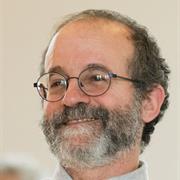Physics: Physics Education
Spring: n/a
Summer: n/a
Overview
The MS in Physics: Physics Education combine curriculum from the Department of Physics and Astronomy and the Department of Education. Students participate in a larger community of discipline-based education research in STEM fields through the Institute for Research on Learning and Instruction.
Program Outcomes
As a student in the Physics Education master's program, you'll develop graduate-level understanding in physics and in research on learning and instruction, mainly through coursework, with opportunities for experiences conducting original research. The program prepares graduates for a variety of possible roles, including teaching, work in education-related organizations. Some of our graduates also go on to further graduate study in doctoral programs.
Application Requirements
- Application fee
- Resume/CV
- Personal statement
- Official TOEFL, IELTS, or Duolingo English Test, if applicable
- Transcripts
- Three letters of recommendation
Tuition and Financial Aid
See Tuition and Financial Aid information for GSAS Programs. Note: This program is eligible for federal loans and Tufts tuition scholarships.
Faculty

David Hammer

David Hammer
Research/Areas of Interest: Research on learning and instruction. My research is on learning and teaching in STEM fields (mostly physics) across ages from young children through adults. Much of my focus has been on intuitive "epistemologies," how instructors interpret and respond to student thinking, and resource-based models of knowledge and reasoning.

Hugo Beauchemin

Hugo Beauchemin
Research/Areas of Interest: Experimental High Energy Physics My research focuses on the discovery of new fundamental particles of nature, as well as on the understanding of the behavior of the known particles. To do this, I participate in the ATLAS experiment, one of the two general-purpose detectors at the Large Hadron Collider at CERN. My work currently consists in analyzing data in order to: Perform precision measurements leading to a better understanding of the strong interaction within the QCD theoretical framework; Search for new physics in events involving large amount of missing energy, typical signature of new particles that interact very weakly with normal matter such as dark matter candidate; Develop and estimate the performance of the ATLAS trigger system. This last aspect of my work also involves software development and a participation in the detector operation. I'm focusing my efforts on the Missing Energy trigger. The Standard Model of particle physics, despite being very successful, cannot be the end of the story. It contains a certain number of theoretical dissatisfactions. Of all the possibilities, I believe that dark matter is one of our best guess. Its existence is based on experimental facts, and the mass scale of dark matter particles, in the case where it is the right explanation, should be accessible at the LHC. Its existence would be inferred by the observation of missing energy in subset of all collected events. Looking for excesses of events involving large amount of missing energy over expectations is a promising way to look for dark matter at the LHC. My approach is to carry such search by performing precision measurements of Standard Model quantities, to optimize the sensitivity of the analysis to such new particles. Predictions using quantum chromodynamics (QCD) implies many approximations, assumptions or simplifications at various levels. These could lead to large systematic uncertainties on various Standard Model predictions, possibly leading to significant limits in our sensitivity to new phenomena. My research try to determine which of the simplifications and approximations are acceptable at the level of precision needed for a new physics discovery. To this end, I investigate events that contain a vector boson and jets, as they are sensitive to such physics and yet provide a clean enough environment to allow for high precision measurements. These are also the most important background to a wide range of new physics signature. As a side, I am also interested in the philosophy of physics, focusing on epistemological aspects of experiments and simulations as used in High Energy Physics.

Timothy Atherton

Timothy Atherton
Research/Areas of Interest: Condensed Matter Physics, Soft materials, Colloids, Liquid Crystals, Computational Physics, Physics Education Soft matter physics is the study of matter that is all around us in everyday life: soaps, oil, foods, sand, foams, and biological matter. All of these are readily deformable at room temperature and combine properties of both fluids and solids. Despite their ubiquity, these materials are extremely complicated. Unlike simple fluids like water, they have rich internal structure; unlike crystalline solids they are typically not periodically ordered. Moreover, they exist in long-lived metastable states far from equilibrium and respond to stimuli such as applied electric and magnetic fields, temperature and pressure. My work seeks to understand how these materials respond to shape: how they self-organize on curved surfaces or in complex geometries and how this knowledge can be used both to sculpt desirable shapes at the microscopic scale and create shape changing systems like soft robots. We use high performance computing to simulate and predict these behaviors and work closely with experimentalists at Tufts and beyond.

Vesal Dini

Vesal Dini
Research/Areas of Interest: Physics Education Research: Scientists are professional learners who employ a range of skills and qualities to learn new things. Why should it be any different for students in how they advance in their understanding of scientific concepts? My current research focuses on how learners come to engage in the practices of science in their efforts to learn new things. To make progress on the question, I have studied how learners' views of knowledge (personal epistemologies) impact their scientific engagement in the contexts of introductory physics, quantum mechanics, and science teacher education. I have also studied the interaction of personal epistemology with emotions that come up in the doing of science (epistemic affect). Most recently, I have looked at how personal epistemology interconnects with social caring and epistemic empathy. These studies help outline some paths to progress in equity and inclusion in STEM fields, and inform my approaches to teaching.

Hugh Gallagher

Hugh Gallagher
Research/Areas of Interest: Experimental particle physics, neutrino oscillations, neutrino interaction physics, neutrino astrophysics, computer simulations of neutrino-nucleus interactions. The main thrust of my research is the study of the neutrino. Through neutrino oscillation experiments, we are gaining insights into neutrino masses and mixing parameters. Precise measurements of these quantities may allow us to uncover the reason behind the matter-antimatter asymmetry in the universe, or point the way to a theory beyond the standard model. Precise measurements of oscillation parameters require good models of neutrino-nucleus interactions. I work on experiments that are studying neutrino oscillations (NOvA and DUNE), on experiments that are providing new data on neutrino-nucleus interactions (MINERvA), and on a widely-used software package (GENIE) that is used to simulate neutrino-nucleus interactions.

Roger Tobin

Roger Tobin
Research/Areas of Interest: Experimental condensed matter physics; physics education For most of my career, my primary physics research area has been experimental surface science. In my lab at 574 Boston Ave., my students and I have studied what happens when foreign atoms and molecules form chemical bonds with metal surfaces. Our research has had implications for a range of potential applications including catalysis, chemical sensing, and the growth of thin films and nanoparticles on surfaces. In recent years my focus has shifted towards physics education, at both the college and, especially, at the elementary school level. Together with collaborators at a local nonprofit organization and at other universities, I have helped to develop and study curriculum materials and professional development strategies for the study of matter and energy in grades 3-5. In my own classes at Tufts, I have implemented and studied a range of instructional approaches aimed at more effective and equitable learning.